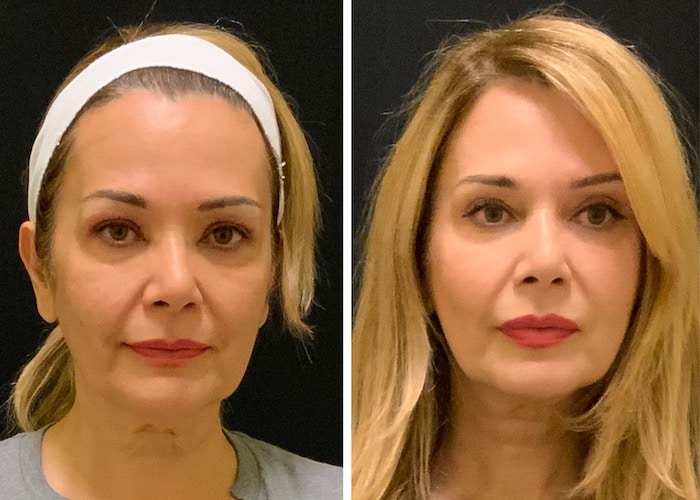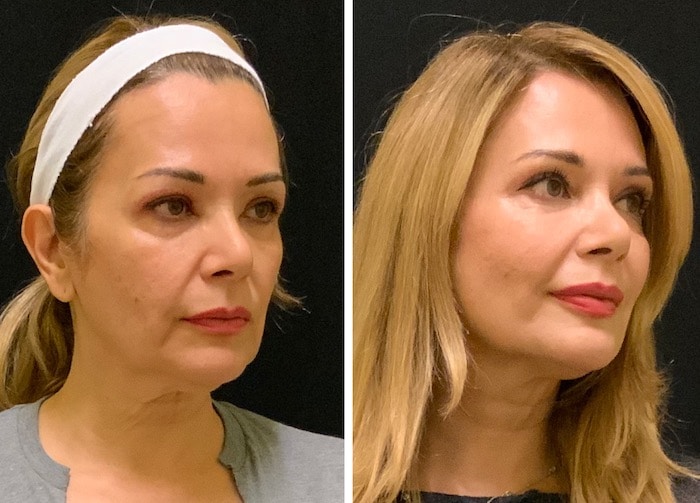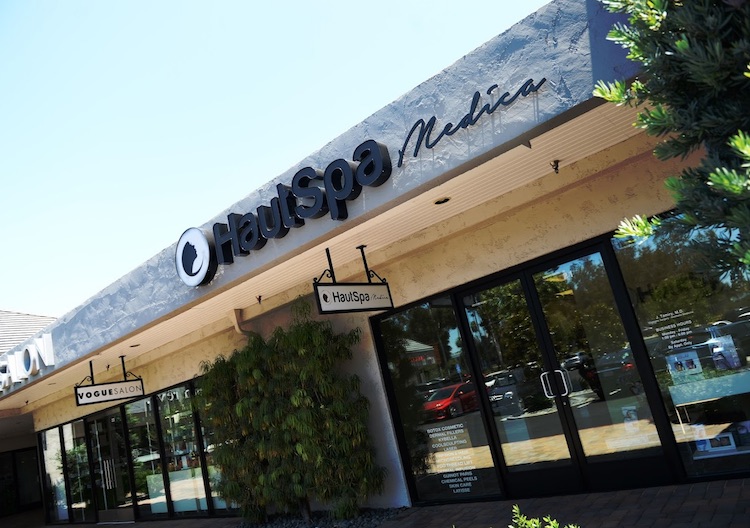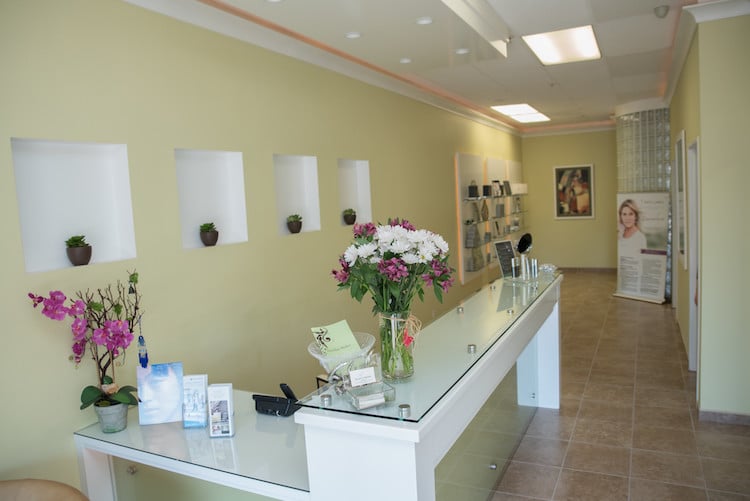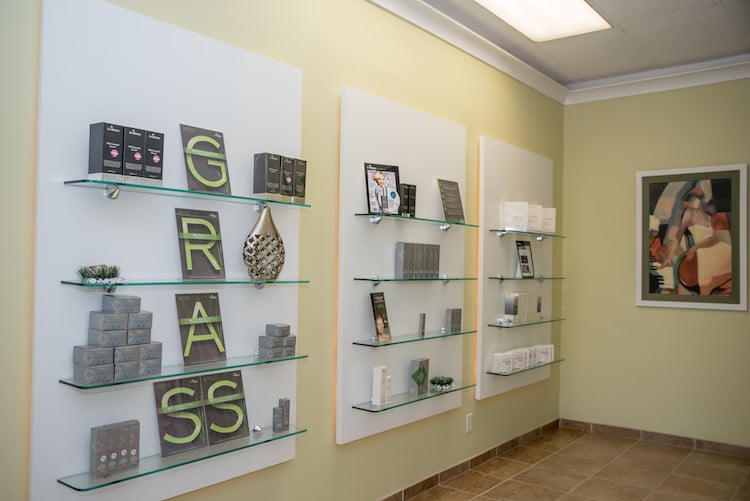Facial Fat Transfer
Micronized Fat Injection
Facial fat transfer is a minimally invasive injection procedure that uses your own body fat from your hips, thighs, or stomach to rejuvenate and restore volume to your face. It is most commonly used to tighten up loose skin, boost elasticity and collagen production, improve circulation and moisture.
Micronized fat injections last 2-5x longer than traditional dermal fillers for most patients and has more effective rejuvenating process. Fat injections also minimize the risk of an allergic reaction, since the fat injected comes from your own body.
Treatment Time: 2 hours
Longevity: 3-5 years
Cost: $5,000 (LIMITED TIME: $3,500)
Request An Appointment
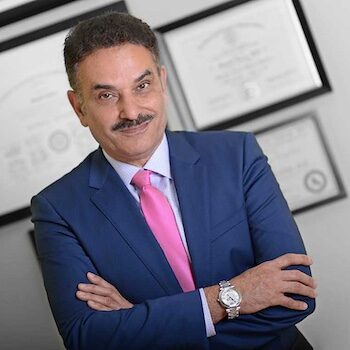
Dr. Tamiry
Dr. Tamiry specializes in nonsurgical aesthetics treatments for beauty enhancement and anti-aging. He is passionate about helping men and women achieve new levels of natural beauty and confidence.
Dr. Tamiry has been practicing medicine for 20+ years and has operated his premier medical spa in Newport Beach since 2015. He is an active member of the American Academy of Cosmetic Surgery and the AMA.
Facial fat grafting is a minor cosmetic surgical procedure in which liposuction is used to remove fatty adipose tissue from undesirable places on the body (like the abdomen) and transferred to the face via injection. The harvested fat cells are spun up in a centrifuge or processed using other methods to prepare them for the transfer, and then a surgeon injects the cells into areas of the face that have wrinkles, creases, hollows, or are starting to sag. Because fat grafting uses the body’s own supply of fat cells instead of a synthetic filler, the effects are generally permanent, with most patients seeing final results after about nine months.
Fat injection grafting has the twofold benefit of removing fat from an unwanted area via liposuction and then making the face appear more youthful and full after the cells are reinjected in the desired locations. For this reason, and the fact that facial fat grafting is a permanent solution to wrinkles, creases and loose skin, it is often considered the next step after a patient has been using ‘liquid facelifts’ like Juvèderm.
How Does A Facial Fat Graft Work?
In a facial fat graft, fat cells are taken from the buttocks, thighs, abdomen, or hips via liposuction. Liposuction is a common surgical procedure in which a thin vacuum needle, called a cannula, is inserted into a small incision made by the surgeon in the donor area. The cannula then removes and harvests the fat cells. In typical liposuction treatments the cells are discarded, but when a fat transfer is taking place, the cells are stored and made ready to use in the next step of the procedure.
After harvesting, the fat cells are then treated and processed either by a filtration method or through a centrifuge, shrinking the cells, removing impurities, and creating nanoparticles of fat which are rich in stem cells. These small units of fat cells, sometimes referred to as microdroplets, are then ready to be injected into the areas of the face that are in need of plumping. Typically, facial fat grafting is used to treat marionette lines around the mouth, wrinkles near the fold of the nose and beside the cheeks, the hollows beneath the eyes, and anywhere else where skin is looking wrinkled and deflated.
As the fat cells are deposited into their new homes by the cannula in small lines, they are typically massaged slightly to help them spread out and nestle with the existing adipose tissue and cell network. For the fat cells to survive the transfer, a new connection to the body’s blood flow must be created; and this is not always successful. It is often estimated that approximately half of the transferred fat cells will not receive adequate blood flow after the transfer and will subsequently die. Because this is a known effect of fat injection, most surgeons will “overfill” the injection sites, expecting some of the cells to die.
The injection process is usually very quick and moderately painless. Often, the face is numbed before the injections begin to help manage discomfort. The entire process, from the initial liposuction to the final facial fat injection takes approximately 120 minutes, and after the procedure is complete, a patient is free to leave and return home.
What Are The Side Effects Of A Facial Fat Graft Transfer?
Most people who pursue facial fat grafting take about a week away from their jobs after the procedure, to give themselves time to heal. Because the process is twofold, involving both liposuction and a fat transfer, the body typically experiences bruising, swelling, redness, tenderness, and discomfort around the procedure sites.
After the procedure it is recommended to keep pressure on the injection sites to help establish the blood flow the new fat cells need and to reduce swelling; and it is also recommended to avoid strenuous activity for up to a week. After that, normal activities can be resumed. To manage the pain and minor aches from the procedures, over-the-counter pain medicines like Tylenol are typically sufficient. One to two weeks after the initial procedure, the swelling should be almost completely gone, and the initial effects of the fat transfer will be seen.
Some patients report unevenness, lumps, or hard spots in the face after a facial fat graft; these typically fade on their own: but if they do not, contact your surgeon.
How Long Until Results Are Visible After A Fat Transfer?
After the swelling, redness, and bruising from the initial surgery have faded, the initial results become visible. In general, the process is considered “complete” after about nine months, when the new fat cells have fully integrated themselves into the face. That being said, there tend to be stages of the process as the months pass from the initial surgery until completion.
Initially, because of the overfilling done to compensate for the expected death of some of the fat cells, the face may appear puffy or too full. This fades as the body adjusts to the new location of the fat cells and as the cells die off, over the course of the first three months. From months three to five, the effects are often the least visible: this is when the fat cells have made their successful integration and cell death has stopped, but the new cells are not yet full of fat tissue. After month five the average patient’s new fat cells start to increase in volume, and by around month nine the full effect is achieved.
How Long Does A Fat Transfer Last?
Facial fat transfer is a permanent procedure, much like the liposuction that precedes it. Excessive weight loss or gain after the surgery can have an effect on the appearance and nullify the effects of the surgery, but barring that, the results should stick around for many years. Facial fat grafts are most effective in patients younger than fifty years old, and typically the younger you are, the more effective and the more healthy the transferred fat cells are.
Since the process is permanent, it can be difficult to reverse if there are lumps, irregularities, or asymmetry due to fat cell death. To truly “reverse” the process of a facial fat transfer, liposuction in the face is required.
ALMI (All me) defined as Autologous Lipocyte Micronized Injection is an in-office method of fat transfer which can be performed under local anesthesia. The process involves harvesting fat cells from the body, which are then separated into individual fat cells and injected into other parts of the body to provide more volume in addition to stem cell like rejuvenation of the area injected.
The outpatient procedure takes less than one hour. Local anesthesia is used, then fat is harvested via liposuction, usually from the thigh or abdomen. Using a cannula (a thin, hollow tube), fat is extracted through a small incision.
The fat cells are filtered to remove impurities, and then it’s “micronized.” The beauty of the ALMI technique is that the fat can be processed to create what we call structural fat, which are intact fat cells that can be transferred from one area to another and provide volume. That way that the growth factors and regenerative components can be extracted and injected to cause a very nice skin rejuvenation.
Once the fat is extracted, you’ll be numbed with a local anesthetic, and your doctor will insert a small cannula into the treatment area, using the fat as an injectable filler.
There downtime is short and the average 2-3 days, after which work can be resumed. As opposed to fillers such as hyaluronic acid and other fillers which are not human tissue, are short lived in their effects, ALMI is considered safe with virtually no chance of allergic reaction, and other side effects associated with the fillers. If you have had facial fillers in the past and are tired of having this procedure done over and over or if you are looking for a natural, long-lasting, short downtime, procedure that can be done in the office under local anesthesia.
This simple treatment is revolutionary in its ability to provide stable volume to the face, lips, jawline, cheek, lower eyelids, hands and breast to provide long-lasting rejuvenation and reversal of the aging process. Specifically to ALMI is adding one’s own Platelet Rich Plasma (PRP) to enhance the effectiveness and rejuvenation provided by fat cell transfer.
Fat transfer has been performed for cosmetic rejuvenation for at least 20 years. The initial process involved general anesthesia in the operating room in which fat cells were harvested using machine suction and then injection of the fat cells back into the body using large bore needles.
The original studies using fat transfer indicated that only 30% to 50% of the fat cells placed in the new location would survive long-term. In addition, because the fat was harvested in a large section the subtle result necessary for successful fat transfer to the face could not be assured.
Over the last 20 years, techniques have evolved such that fat can now be harvested using a low-pressure manual suction with small caliber syringes and then passed through special Nano- filters, separating the large sections of fat into individual cells.

1000 Bristol St N #21
Newport Beach, CA 92660
About
Brands
Treatments
DISCLAIMER: Individual results may vary between patients and your results may be different than those pictured. Dr. Jamshid Tamiry is a licensed physician in the state of California. He will discuss treatment options with you along with cost and potential side effects during your in-office consultation. The content on this website is intended for informational purposes only and is not intended as medical advice, diagnosis or treatment. We practice in compliance with the Medical Board of California. (800) 633-2322 – mbc.ca.gov
Hautspa Medica is a medical spa located in Newport Beach, California. We regularly serve patients from surrounding areas in Orange County including Irvine, Costa Mesa, Santa Ana, Lake Forest and other nearby areas in Southern California.

